Welcome!
This platform aims to provide accurate spatial information of the fishing pressure of Danish fisheries with bottom-towed gears, to support science-based management of the Danish waters.
It shows the spatial distribution and intensity of all bottom-towed gears used by Danish fishermen and provides quantitative fishing pressure indicators as advised by the International Council for the Exploration of the Sea (ICES). Note that the platform only provides spatial and temporal information of the direct, physical contact between the fishing gears and the seabed; the actual impact on the benthic community and seafloor status, and any indirect impacts of the fisheries (e.g. fish population status, or resuspension of sediments), are not included in the tool or accounted for.
Using the tab 'Map' you can select your ICES area(s), year, and fishing gear(s) of interest, for which the spatial distribution is shown in a map, and the fishing pressure indicators are given in a table. Under the tab 'Areas of interest', special attention is given to Natura-2000 areas and off-shore wind farms. Explanations of the outputs, how these are estimated, and the specifications of the different fishing gears are summarized in the 'Information' menu.
In version 2 we now present the multi-year footprint, in line with the D6C2 descriptor of fishing pressure on the seabed under the Marine Strategy Framework Directive. This represents our best estimate of how much of the seabed has physically been affected by Danish fishing gears during the assessed period. The multiyear footprints are calculated for both the overall area of interest and per habitat type. An explanation of its calculation is given under 'Fishing Pressure Indicators' under the information tab.
This page is currently under development and subject to frequent updates.
This webpage is designed by the National Institute of Aquatic Resources (DTU Aqua), within the EMFF project 'Dansk Fisker-Forsker Netværk 3. Fase', which is a collaboration of DTU Aqua with the Danish Fishermen’s Producer Organization (DFPO).


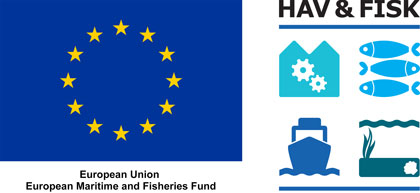
Please, feel free to contact us if you have questions or comments on this webpage. See the relevant email addresses underneath.
kjova@aqua.dtu.dk
Webpage developer within DTU Aqua.
hl@dkfish.dk
Contact person within DFPO.
Select the area, gear and year of interest and press 'Submit my selection'. The corresponding fishing intensity will then be shown on the map and in the table.
Select the area(s):
Select the gear(s):
Otter trawls
(OT)
Dredges
Beam trawls
(BT)
Demersal seines
Select the year:
Map
This map shows the annual fishing effort of the selected gears and year in the selected area. It can also show the national waters (EEZ), the official regional areas as defined by ICES (ICES Areas), and the international fishing effort (IFE) of all demersal gears combined over the year 2020. You can choose to co-display the Broad Habitat Types as defined under the Marine Strategy Framework Directive (MSFD), or the water depth (Depth). The legends for these layers can be found by clicking the corresponding button below the map.
Loading...
Table
This table shows the annual Swept Area Ratio (SAR) and the Percentage Unfished Area (PUA) for the selected area, for all demersal fishing gears combined and for the selected gears separately. The numbers represent the annual values. Please see the 'Fishing pressure indices' tab for information on their calculations.
International fishing effort
This table shows the annual Swept Area Ratio (SAR) and the Percentage Unfished Area (PUA) of the international fishing effort for the selected gears and year in the selected area. The data is based on the ICES-VMS call for the OSPAR advice.
Find more detailed fishing information on special areas, like Natura-2000 sites.
Select the year:
Select the gear(s):
The table underneath only shows fishing activity indicators for the selected gears and year inside the selected area. So, the displayed fishing activity outside of the selected site is not included in this table. The table shows the annual Swept Area Ratio (SAR) and the Percentage Unfished Area (PUA) for the selected year, gears, and area. Please see the 'Fishing pressure indices' tab for information on their calculations.
Loading...
Loading...
We here present a multi-year fishing footprint, in line with the D6C2 descriptor of fishing pressure on the seabed under the Marine Strategy Framework Directive. For the Danish Exclusive Economic Zone, we estimated the individual footprints of all Danish vessels fishing with mobile bottom-contacting gears. These individual footprints were then combined to determine the multiyear footprint, which represents our best estimate of how much of the seabed has physically been affected by fishing gear during the assessed period. The multiyear footprints are calculated for both the overall area of interest and per habitat type.
The footprint data shown on this page can be downloaded as GIS-layers here .
This map shows the multiyear footprint over the selected period. Note that the fishing footprint is determined at the very high resolution of 0.001 degree (ca 100 x 60 meter), but that the plotted resolution varies with the zooming level of the map.
Loading...
For the selected time period and area, this table presents the various habitat types that are present (both in absolute values and as % of the overall area) and how much of these habitats have been physically affected by mobile bottom-contacting gears.
This graph shows for each year within the selected period, and for all years combined, the percentage of the selected area that is fished, including the distribution of fished area over the different habitat types present.
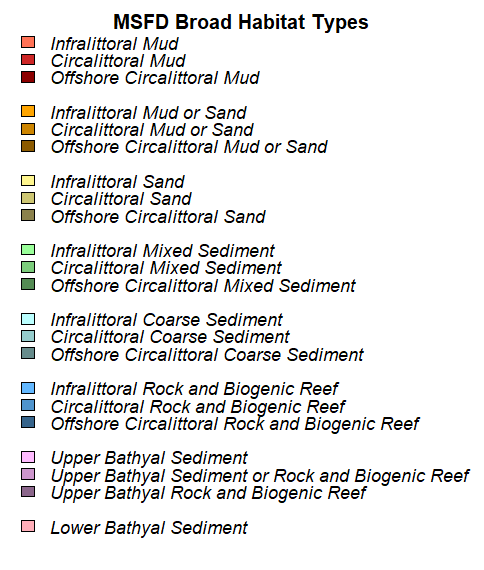
Fishing pressure is expressed according to ICES indicators 1 and 3: the Swept Area Ratio (SAR) and the Percentage Unfished Area (PUA). A description of their calculation is given underneath.
The Swept Area Ratio (SAR) presents the ratio between the area (m2) swept by fishing gears within a grid cell, and the surface area (m2) of that grid cell (here: 100 x 100 meters). Hence, a SAR of 1 means that an area equally sized as the grid cell is fished. SAR less than 1 means less area is fished, and a SAR larger than 1 means that more area is fished. Note that this indicator displays the average fishing intensity; even with a SAR larger than 1, some spots can remain unfished.
Trawling tracks
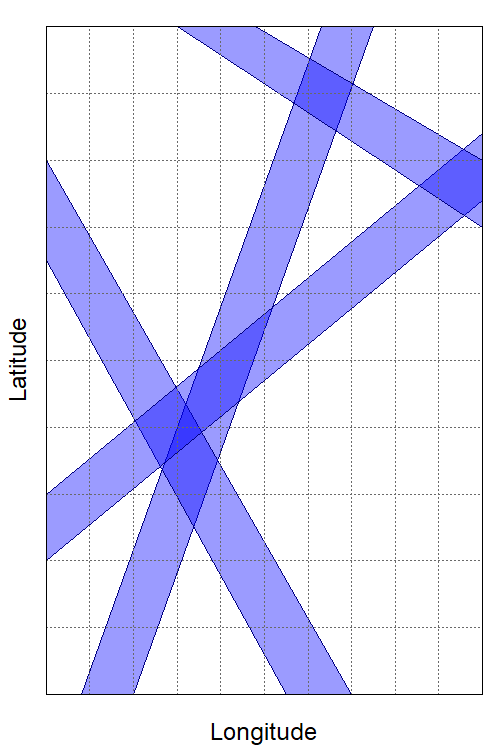
Swept Area Ratio (SAR)
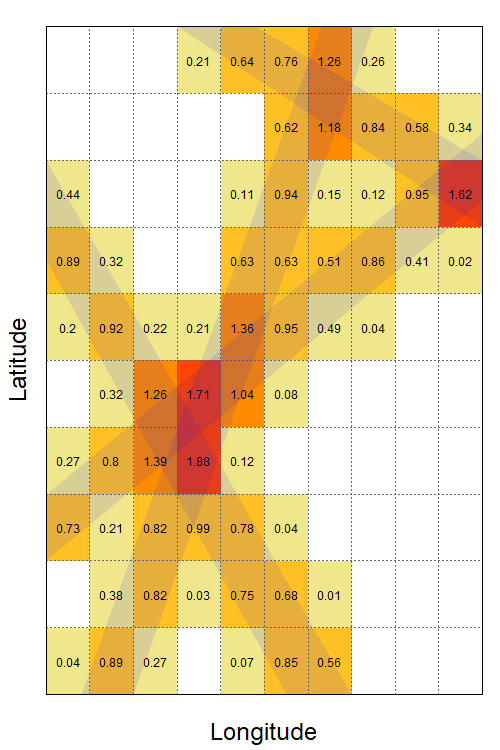
Trawling tracks
We will use this hypothetical example to explain how the fishing pressure indicators are calculated. In the figure you see a gridded area, with four trawling tracks depicted in blue. Some tracks overlap, and most of the area is not trawled.
Swept Area Ratio (SAR)
We calculated the swept area ratio for each grid cell in the example. They range from 0 to 1.88. Some cells are thus unfished, while others are fished more than once a year. However, you can see from the actual trawling tracks that no single grid cell has all its surface area fished; not even the grid cells with the highest SAR.
Conclusions
The average fishing intensity (SAR) for the entire area is 0.37. This estimate includes all grid cells, both fished and non-fished.
The average fishing intensity (SAR) for the fishing grounds is 0.61. This estimate is restricted to the fished grid cells. This is the average SAR estimate presented in this online tool.
The Percentage Unfished Area (PUA) represents the minimum extent of the area that is not fished. In this, we take into account that some grid cells are only partially fished. However, spatial overlap of fishing tracks (within a grid cell) is not taken into account. The PUA estimate is therefore a conservative estimate of the area that is unfished.
Trawling tracks

Percentage Unfished Area (PUA)
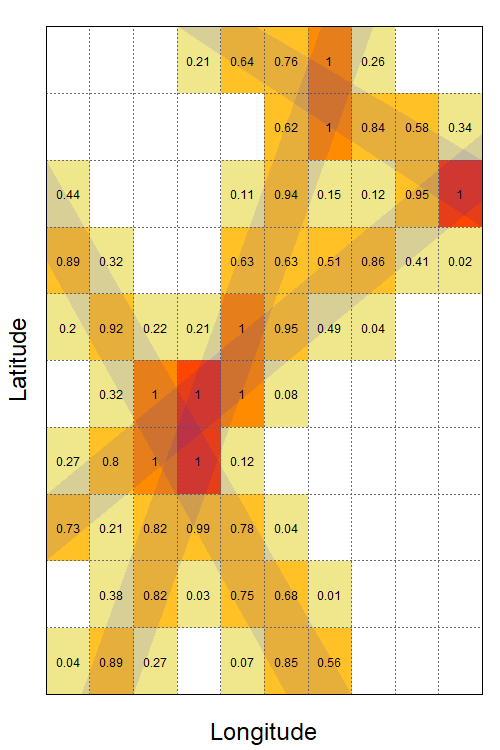
Trawling tracks
We will use this hypothetical example to explain how the fishing pressure indicators are calculated. In the figure you see a gridded area, with four trawling tracks depicted in blue. Some tracks overlap, and most of the area is not trawled.
Percentage Unfished Area (PUA)
To determine the PUA, we first calculate the fished area as the sum of all SAR-values (for all grid cells). SAR-values >1 are set to 1, as these grid cells are assumed to be fully fished. Grid cells that are only partly fished (0 < SAR < 1), contribute the proportion that they are fished.
Conclusions
In this example, a minimum of 66.3 % of the area is not fished.
That is a much higher percentage than if this indicator is calculated at the spatial resolution of full grid cells, which would result in an estimate of 39 % of the area being not fished.
When the Percentage Unfished Area (PUA) is calculated for a multi-year period, the key step is to combine the yearly SAR values to determine the overall fisheries footprint. The multi-year PUA is then calculated from this overall footprint in the same way as the annual PUA calculation.
Trawling tracks
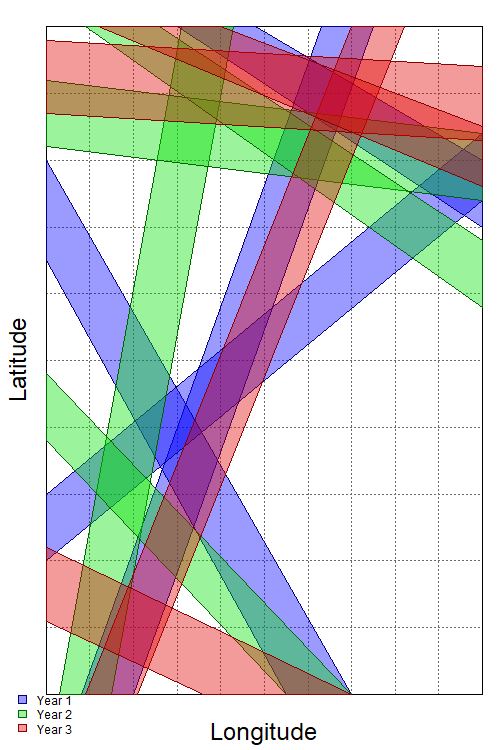
Swept Area Ratio (SAR)
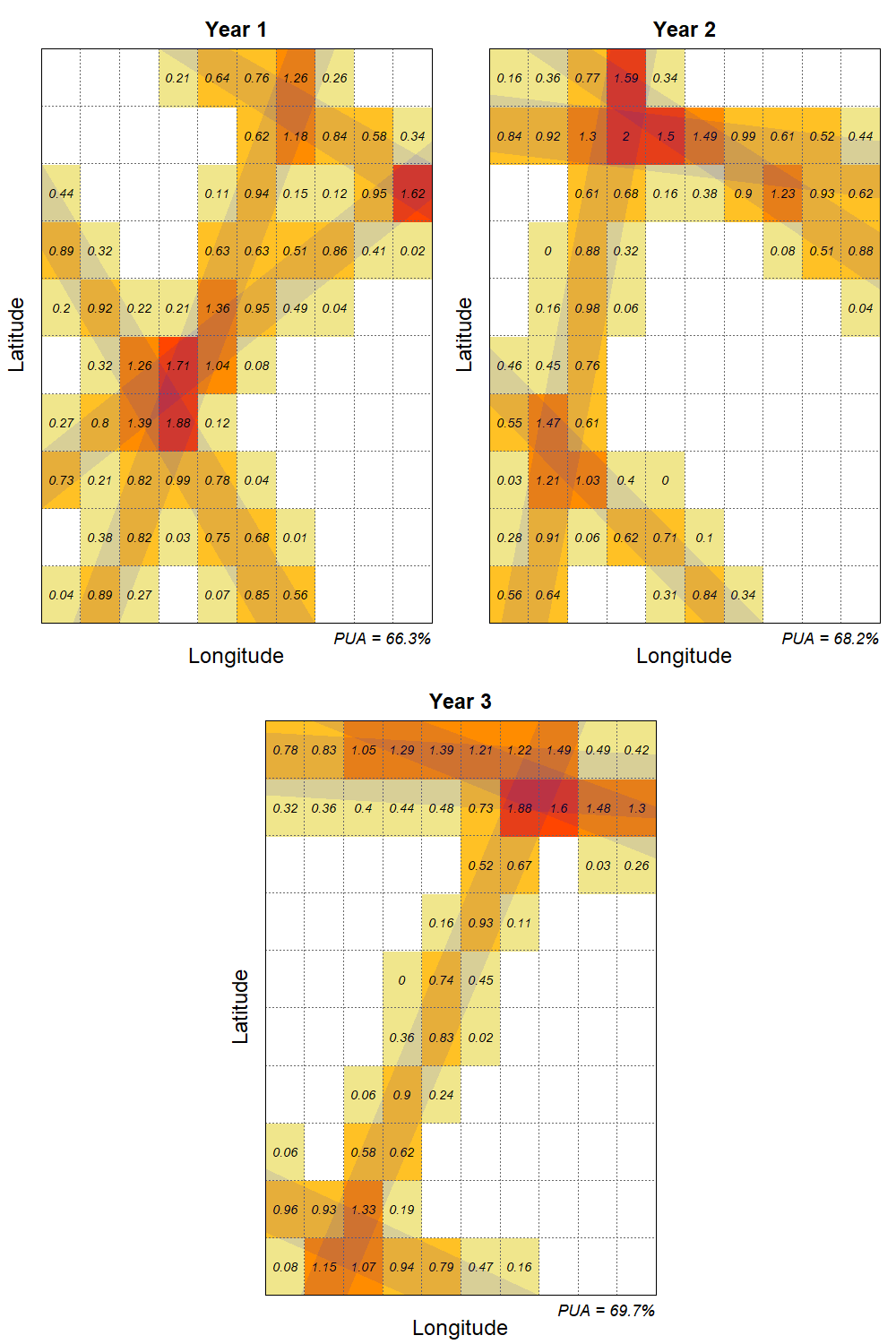
Percentage Unfished Area (PUA)

